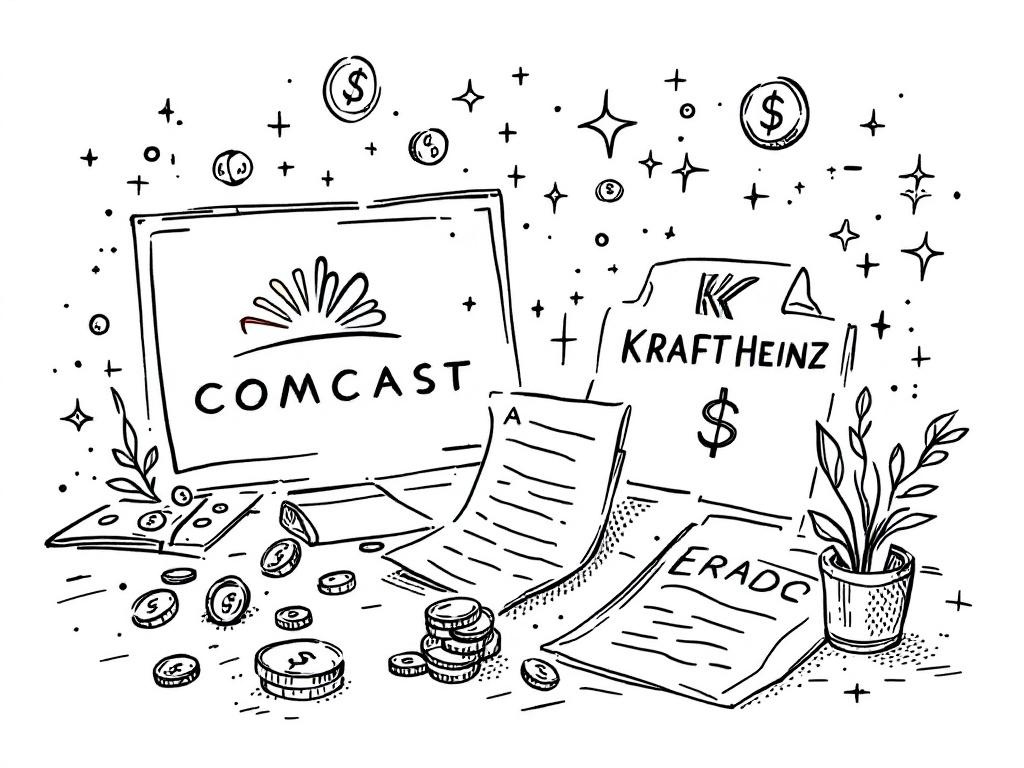Comcast and Kraft Heinz: High Dividends Amid Economic Uncertainty

New York, Wednesday, 29 October 2025.
Comcast and Kraft Heinz offer appealing 4.5% dividend yields, attracting investors seeking stable returns. However, both companies face structural issues that could impact long-term growth and dividend sustainability.
Comcast and Kraft Heinz: High Dividends Amid Economic Uncertainty
Comcast (NASDAQ: CMCSA) and Kraft Heinz (NASDAQ: KHC) are attracting attention with their dividend yields of 4.5%, offering potential stability for investors in a volatile market. However, their future growth prospects remain uncertain due to ongoing structural challenges. For Comcast, the mature broadband market has led to stagnation in growth, while Kraft Heinz faces significant hurdles in its business strategy, highlighted by plans to split the company into two distinct entities [1][2][3].
Structural Challenges Facing Comcast and Kraft Heinz
Comcast’s growth stagnation can be attributed to a saturated broadband market, which has limited its ability to expand further [2]. Meanwhile, Kraft Heinz is dealing with a more complex set of challenges. The company’s decision to split into two separate businesses—a move criticized by notable investors such as Warren Buffett—reflects an attempt to address long-standing strategic issues. Despite its high dividend yield, Kraft Heinz is often viewed as a ‘value trap’ because of these underlying business problems [3][4].
Evaluating Dividend Sustainability
Investors must carefully evaluate the sustainability of dividends offered by Comcast and Kraft Heinz. While the current yields are attractive, the companies’ structural challenges could impact their ability to maintain these payouts over the long term. Kraft Heinz’s recent financial strain, demonstrated by a $15 billion impairment charge, and Comcast’s limited growth potential are key factors that could influence dividend decisions in the future [2][3][4].
Conclusion: Balancing Risks and Rewards
For investors considering Comcast and Kraft Heinz, the decision boils down to balancing the attractive dividend yields against the backdrop of potential long-term risks. Given the current economic climate and the companies’ respective challenges, a thorough analysis of their financial health and strategic direction is crucial. Investors should remain vigilant about any developments that could affect the sustainability of these dividends and adjust their portfolios accordingly [1][2][3][4].